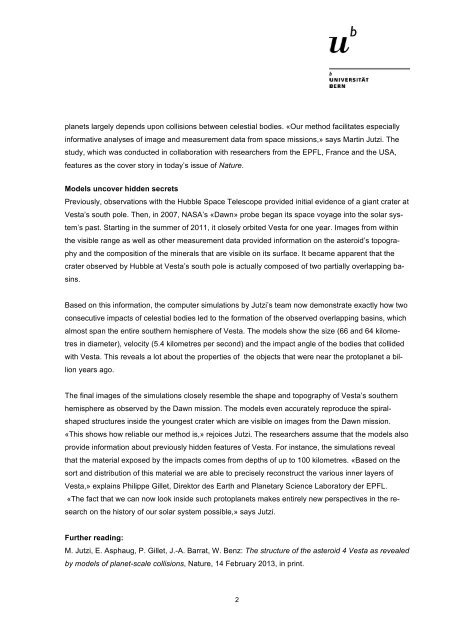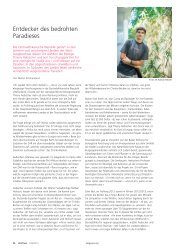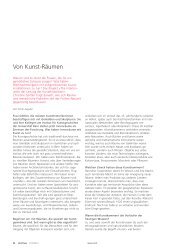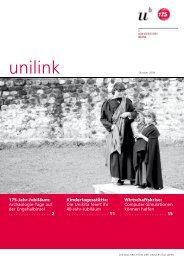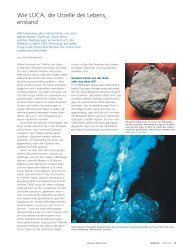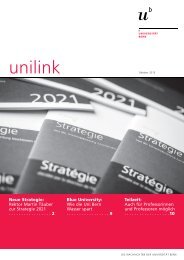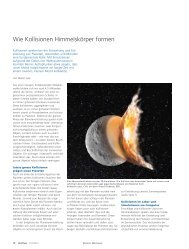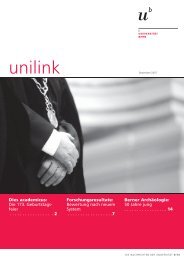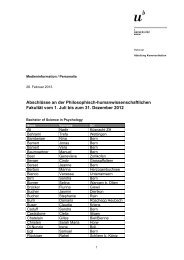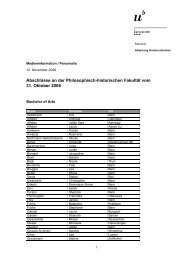EMBARGOED UNTIL: Wednesday 13 February ... - Universität Bern
EMBARGOED UNTIL: Wednesday 13 February ... - Universität Bern
EMBARGOED UNTIL: Wednesday 13 February ... - Universität Bern
Create successful ePaper yourself
Turn your PDF publications into a flip-book with our unique Google optimized e-Paper software.
planets largely depends upon collisions between celestial bodies. «Our method facilitates especially<br />
informative analyses of image and measurement data from space missions,» says Martin Jutzi. The<br />
study, which was conducted in collaboration with researchers from the EPFL, France and the USA,<br />
features as the cover story in today’s issue of Nature.<br />
Models uncover hidden secrets<br />
Previously, observations with the Hubble Space Telescope provided initial evidence of a giant crater at<br />
Vesta’s south pole. Then, in 2007, NASA’s «Dawn» probe began its space voyage into the solar system’s<br />
past. Starting in the summer of 2011, it closely orbited Vesta for one year. Images from within<br />
the visible range as well as other measurement data provided information on the asteroid’s topography<br />
and the composition of the minerals that are visible on its surface. It became apparent that the<br />
crater observed by Hubble at Vesta’s south pole is actually composed of two partially overlapping basins.<br />
Based on this information, the computer simulations by Jutzi’s team now demonstrate exactly how two<br />
consecutive impacts of celestial bodies led to the formation of the observed overlapping basins, which<br />
almost span the entire southern hemisphere of Vesta. The models show the size (66 and 64 kilometres<br />
in diameter), velocity (5.4 kilometres per second) and the impact angle of the bodies that collided<br />
with Vesta. This reveals a lot about the properties of the objects that were near the protoplanet a billion<br />
years ago.<br />
The final images of the simulations closely resemble the shape and topography of Vesta’s southern<br />
hemisphere as observed by the Dawn mission. The models even accurately reproduce the spiralshaped<br />
structures inside the youngest crater which are visible on images from the Dawn mission.<br />
«This shows how reliable our method is,» rejoices Jutzi. The researchers assume that the models also<br />
provide information about previously hidden features of Vesta. For instance, the simulations reveal<br />
that the material exposed by the impacts comes from depths of up to 100 kilometres. «Based on the<br />
sort and distribution of this material we are able to precisely reconstruct the various inner layers of<br />
Vesta,» explains Philippe Gillet, Direktor des Earth and Planetary Science Laboratory der EPFL.<br />
«The fact that we can now look inside such protoplanets makes entirely new perspectives in the research<br />
on the history of our solar system possible,» says Jutzi.<br />
Further reading:<br />
M. Jutzi, E. Asphaug, P. Gillet, J.-A. Barrat, W. Benz: The structure of the asteroid 4 Vesta as revealed<br />
by models of planet-scale collisions, Nature, 14 <strong>February</strong> 20<strong>13</strong>, in print.<br />
2


